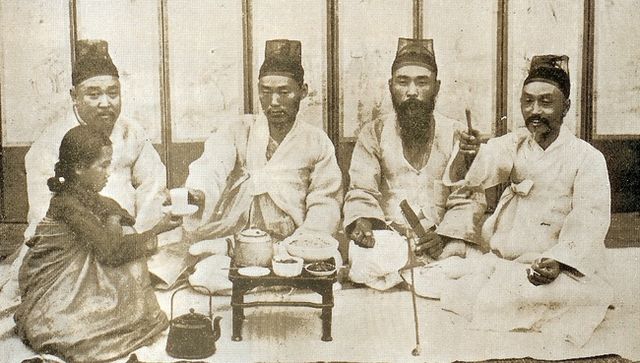Kisaeng, also called ginyeo, were enslaved women from outcast or enslaved families who were trained to be courtesans, providing artistic entertainment and conversation to men of upper class. First appearing in Goryeo, kisaeng were the government's legal entertainers, required to perform various functions for the state. Many were employed at court, but they were also spread throughout the country. They were carefully trained and frequently accomplished in the fine arts, poetry, and prose, and although they were of low social class, they were respected as educated artists. Aside from entertainment, their roles included medical care and needlework.
Kisaeng
A kisaeng girl of Joseon, in 1910
Young kisaeng receiving musical instruction, c. 1910
Jinju kisaeng specialized in the sword dance
Courtesan, in modern usage, is a euphemism for a kept mistress or prostitute, particularly one with wealthy, powerful, or influential clients. The term historically also referred to a courtier, a person who attended the court of a monarch or other powerful person.
Veronica Franco, famous Venetian poet and courtesan. Portrait by Paolo Veronese.
Courtesans with their servants by Lancelot Volders
Olympe Pélissier (Vernet, 1830) was described by Balzac as "the most beautiful courtesan in Paris". In 1846, she married Rossini.
Lais of Corinth by Hans Holbein the Younger, Kunstmuseum Basel








